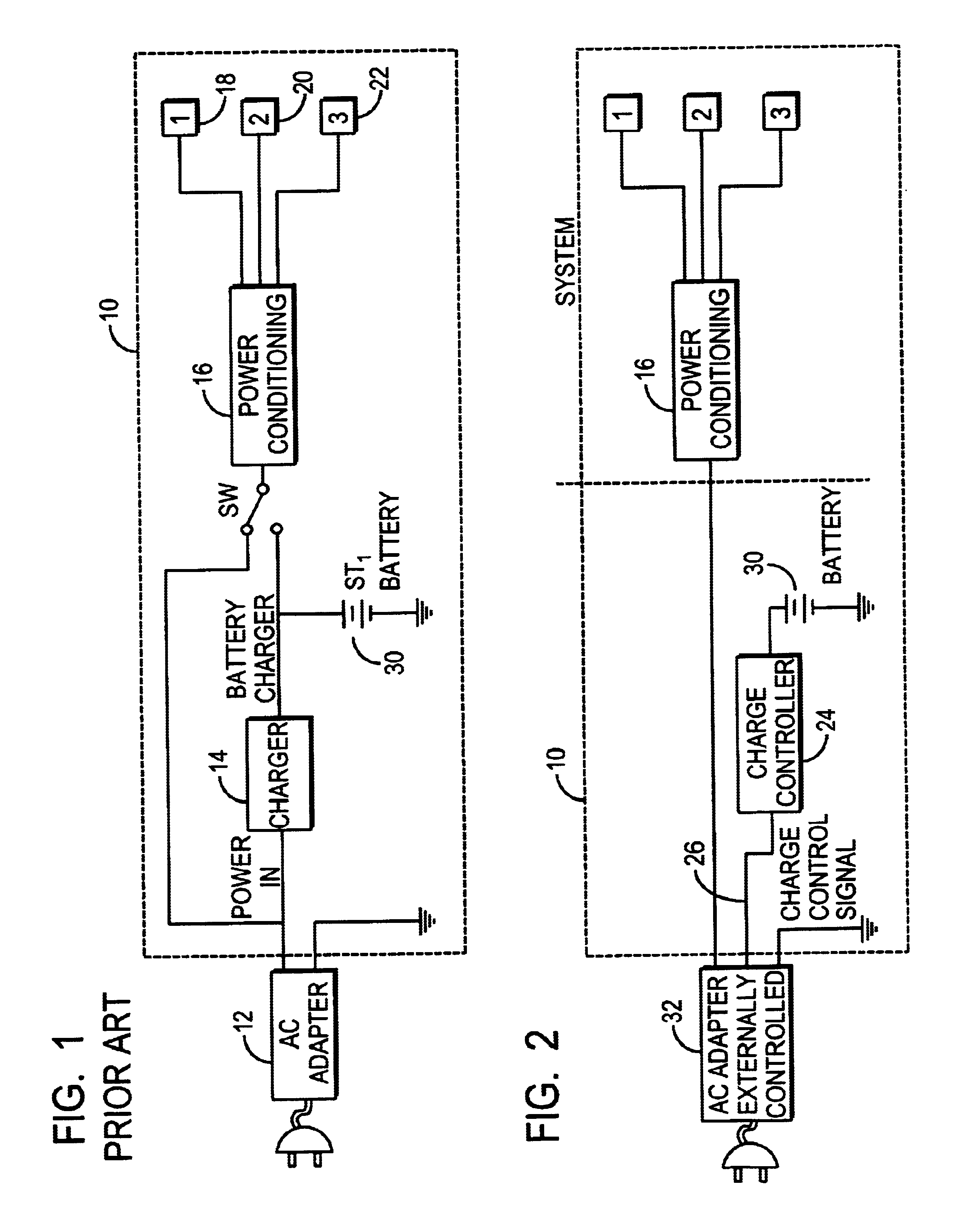Power management for battery powered appliances
a battery-powered appliance and power management technology, applied in electric power, electric vehicles, transportation and packaging, etc., can solve the problems of high cost, high cost, and constant current source of batteries
- Summary
- Abstract
- Description
- Claims
- Application Information
AI Technical Summary
Benefits of technology
Problems solved by technology
Method used
Image
Examples
Embodiment Construction
FIG. 2 depicts a block diagram of an exemplary power management topology according to the present invention. As with the conventional power management topology of FIG. 1, the topology of FIG. 2 includes a system 10 powered by an AC / DC adapter 32. However, in this exemplary embodiment, the adapter 32 is feedback enabled to receive one or more feedback control signals generated by the error amplifiers associated with the charger. Thus, in this exemplary embodiment, it is only necessary for the charger to include error amplifiers, and is thus generalized as a charge controller 24. The charge controller 24 includes a plurality of error amplifiers that monitor battery voltage and / or current and generate an error signal if the battery voltage and / or current exceed some predetermined threshold. Additionally, an error amplifier may be included to monitor input power availability and generate an error signal based on the. charging requirement of the battery balanced with the power requiremen...
PUM
 Login to View More
Login to View More Abstract
Description
Claims
Application Information
 Login to View More
Login to View More - R&D
- Intellectual Property
- Life Sciences
- Materials
- Tech Scout
- Unparalleled Data Quality
- Higher Quality Content
- 60% Fewer Hallucinations
Browse by: Latest US Patents, China's latest patents, Technical Efficacy Thesaurus, Application Domain, Technology Topic, Popular Technical Reports.
© 2025 PatSnap. All rights reserved.Legal|Privacy policy|Modern Slavery Act Transparency Statement|Sitemap|About US| Contact US: help@patsnap.com



